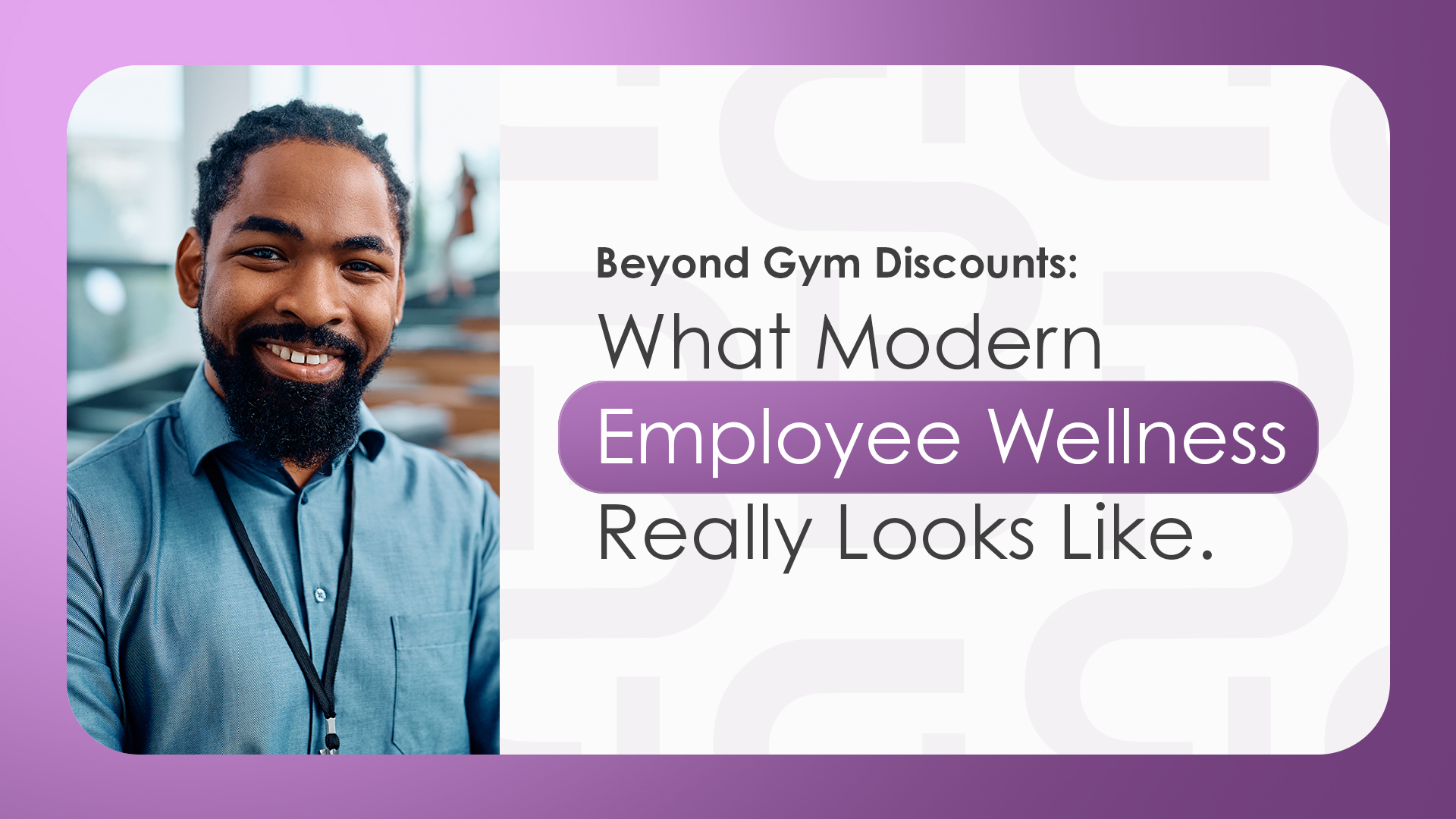Introduction
For a long time, the phrase “employee wellness” often meant a free yoga class at lunch or a discounted gym membership. While these initiatives were appreciated, they barely scratched the surface of what today’s workforce actually needs.
Modern employees are facing very different challenges. Rising rates of stress, the financial pressures of inflation and housing, and the complexities of balancing work and life have changed how wellness is defined. Employees now expect support that extends beyond physical health to include mental wellbeing, financial security, and work-life balance.
For employers in Canada, that means rethinking wellness programs as part of a comprehensive employee benefits plan—not just as a perk on the side.
Why Wellness Expectations Have Shifted
The past decade has seen a fundamental change in how employees view wellbeing.
- Generational priorities: Millennials and Gen Z place a stronger emphasis on mental health, flexibility, and inclusivity compared to previous generations.
- The pandemic effect: Remote work and burnout highlighted the need for broader wellbeing strategies that go beyond physical health.
- Economic pressures: Nearly half of Canadians report losing sleep because of financial worries, and nearly one in three say they are short of money at the end of the month (Government of Canada, 2024). This has made financial wellness as important as physical wellness.
The takeaway? Employees want wellness programs that are personal, accessible, and meaningful.
Core Elements of Modern Employee Wellness
- Mental Health as a Priority
Mental health support has shifted from being considered an “extra” to being seen as essential. Employees expect access to resources that address stress, burnout, and long-term wellbeing.
Modern benefits may include:
- Coverage for therapy and counselling beyond the limited sessions of traditional Employee Assistance Programs (EAPs).
- Digital mental health solutions like mindfulness apps or virtual therapy sessions.
- Workshops and training on stress management, resilience, and emotional health.
When employees know their mental health is supported, it improves engagement, reduces absenteeism, and builds loyalty.
- Financial Wellbeing
Financial stress is one of the leading causes of workplace distraction. Employers that provide financial wellness benefits help employees feel more secure and focused.
Key examples include:
- Retirement savings plans such as Group RRSPs, pensions, or deferred profit-sharing programs.
- Employer-matched contributions to encourage savings.
- Financial education sessions on budgeting, debt management, or investment basics.
- Support for unique needs like student loan repayment or RESP matching for families.
By incorporating financial wellbeing into a group benefits plan, employers send a powerful message: “We care about your future, not just your present.”
- Flexibility and Work-Life Balance
Wellness is not just about what happens during work hours. Employees increasingly value benefits that give them time and flexibility to manage their personal lives.
Modern approaches include:
- Flexible work schedules and hybrid or remote options.
- Additional caregiving leave for children or aging parents.
- Paid volunteer days or “life days” that recognise responsibilities outside of work.
These initiatives help employees manage stress while improving morale and retention.
- Inclusive Wellness Programs
Wellness isn’t one-size-fits-all. Employees are at different life stages and have diverse needs. Inclusivity ensures that all employees feel supported.
Examples include:
- Fertility and adoption support.
- Coverage that supports LGBTQ+ families.
- Elder care programs for employees supporting aging relatives.
- Accessibility resources for employees with disabilities.
Inclusive benefits demonstrate that wellness is about the whole person, not just the average employee profile.
- Physical Health Reimagined
Gym passes are still valuable, but physical wellness has evolved to cover a broader spectrum of needs.
Employers are now providing:
- Virtual fitness classes for remote or hybrid workers.
- Ergonomic support such as home office stipends or sit-stand desks.
- Preventive health screenings and vaccinations.
- Coverage for paramedical services like physiotherapy, massage therapy, or nutrition counselling.
The focus is no longer just on “fitness.” It’s on long-term health and quality of life.
Wellness as a Strategic Business Priority
The scale of investment reflects how seriously organisations now take wellness. By 2026, global corporate spending on wellness is expected to reach $94.6 billion (Harvard Business Review, 2024). For employers in Canada, this trend underscores that wellness is no longer a nice-to-have — it’s a competitive necessity.
Why Modern Wellness Matters for Employers
Investing in wellness isn’t just about keeping employees happy—it has direct business outcomes.
- Improved retention: Employees are more likely to stay with organisations that demonstrate care for their wellbeing.
- Higher productivity: Reduced stress and better health mean employees are more focused and engaged.
- Lower absenteeism: Employees supported with wellness programs are less likely to take extended sick leave.
- Stronger employer brand: In a competitive talent market, comprehensive wellness benefits set employers apart.
When done well, wellness becomes a strategic advantage, not just a line item in the budget.
The Role of Employee Benefit Consultants
Designing wellness programs that genuinely impact employees requires expertise. This is where employee benefits consulting comes in.
Unlike brokers who primarily focus on sourcing insurance packages, employee benefit consultants:
- Benchmark wellness offerings against industry and competitor standards.
- Design programs that balance cost with real employee impact.
- Recommend innovative solutions such as flexible benefits or wellness stipends.
- Provide analytics and reporting to measure program performance.
- Ensure programs stay aligned with evolving workforce needs.
At Benchmark Benefits, we’ve seen firsthand how the right wellness strategy transforms employee engagement and retention. It’s not just about offering more, but about offering smarter, employee-centred programs.
How Employers Can Get Started
For organisations looking to rethink their wellness approach, a few key steps can make all the difference:
- Listen to employees – Use surveys or focus groups to understand what wellness means to your team.
- Audit your current plan – Identify gaps or underused benefits.
- Partner with experts – Work with an employee benefit consultant to design a plan that fits both your workforce and your budget.
- Communicate clearly – Employees should understand not just what they’re offered, but why it matters.
Final Thoughts
Modern wellness is not about discounted gym memberships or surface-level perks. It’s about addressing the full spectrum of employee needs: mental health, financial stability, inclusivity, and long-term wellbeing.
For Canadian employers, the opportunity is clear. By designing wellness programs that reflect today’s realities, organisations can reduce stress, improve retention, and build a more resilient workforce.
At Benchmark Benefits, our consultants work with employers to build benefits strategies that go beyond perks—creating programs that genuinely improve lives and strengthen businesses.
Ready to rethink wellness at your organisation? Contact Benchmark Benefits today.




